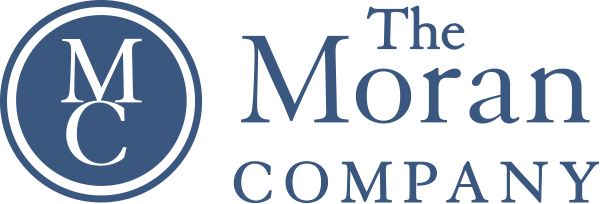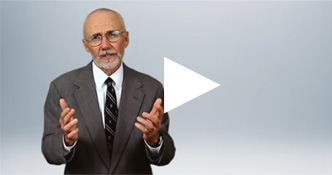The Essential Components of Grant Writing
by Susan Whitmore
Writing associated with development has become a science. Excellent writing, especially grant writing, is critical to the success of your campaign or project. It is imperative that the grant application presents your organization’s unique strengths and the case for need in the most succinct, comprehensive and accurate light.
While a funder may require that your grant request be presented in a particular format, most grant applications adhere to the following components:
1. Executive Summary
2. The Case for Need
3. Project Overview
4. Project Budget
5. Organization Overview
6. Appendices and Attachments
Executive Summary: One Page
The Executive Summary is a one-page synopsis designed to convince the funder that your project is deserving of support. It includes information on:
- The Applicant: A brief statement of your organization’s name, history, mission, and ability to fulfill the project.
- The Problem: A description of the problem or need your organization is ready to tackle.
- The Solution: A description of the proposed solution to the problem (your project), including who will benefit, where and when it will take place, and who will provide administrative oversight.
- Financial Support: Funding needed for the project to be accomplished, as well as your organization’s plans for future funding.
The Case for Need: One Page
This section of your grant request presents enough evidence to convince the potential funder of the need for the project. The narrative should convey that your organization both understands the problem and can solve it. You will want to include accurate data and up-to-date statistics based on outside authoritative sources and your organization’s experience. The case should then persuasively delineate how your organization’s project will address the need in a unique and effective way. If appropriate, discuss how your project meets the need in a better way that other projects or initiatives do.
Project Overview: 3 to 5 Pages
The Project Overview has four sections:
1. Objectives: Specific, measurable outcomes of the project. Objectives may be related to an event or performance, a service or a product.
2. Methods: A delineation of the specific activities that will take place to achieve the objectives. Methods describe the implementation of the project, including how, when, and why.
3. Administration: This section focuses on the staff that will administer the project, including their qualifications and project-specific responsibilities. Project staff may include volunteers, consultants, as well as paid employees. Depending on the number of staff, detailed biographical information may be included in this section or as an appendix.
4. Outcomes Measurement: This section describes your organization’s plan for evaluation of the project after its completion. Outcomes measurement should include both a measurement of the product (learning process, performance, or product) and an analysis of the process. Include a description of how data will be collected and analyzed. Indicate whether the evaluation will be shared with funders, used internally, or both.
Project Budget: One Page
A simple project budget contains a one-page statement of projected expenses. A budget narrative may be included to explain how you arrived at your final numbers. If the funder requires a more complex presentation, you may include an additional section itemizing projected support and project revenue. In either case, the expense budget should include:
- Personnel: Include a percentage of the Executive Director’s time and a line item for the Project Director. Subcategories include salaries, consultants, and benefits.
- Office Space: Include a percentage of the organization’s office space and overhead used for the project.
- Office Supplies: Xerox, office materials, telephone, fax, etc. associated with the project.
- Other Project Costs: All other project costs, such as travel and lodging, printing, and equipment.
If you include a projected income budget, the project revenue and funding support total should match your project expense budget total. Include the request you are making to the funder as a line item in this statement.
Organization Overview: Two Pages
The Organizational Overview builds on the information you presented in the Executive Summary. Your narrative here should reflect the integrity, growth, and stability of your organization over time, as well as the current strengths of your administration and board. A typical overview will touch on the following topics:
- Brief History: Include the story of the organization’s founding members and a reiteration of the organization’s mission.
- Current Activities: Delineate current projects and programs, and if appropriate, describe past program successes.
- Community Impact: Cite evidence of your organization’s involvement with and impact on the community.
- Individuals Served: Include demographics of the organization’s membership or constituency served.
- Strong Leadership: A list of current staff and governing board, including board members’ community and professional affiliations.
Appendices and Attachments
Depending on the grant application guidelines, your proposal may include the following additional items:
- Cover letter, in which you state your request and delineate the main points of your proposal;
- A copy of your organization’s operating statement for the most recently completed fiscal year;
- A copy of the IRS letter designating your agency as a 501(c) 3 organization;
- Letters of support from project partners and additional funders;
- A copy of your most recent tax return or financial audit.
Occasionally, a funder may request additional supporting materials in the form of newspaper articles, videos, promotional materials, and/or testimonials. However, be mindful that when it comes to grant applications, less is often more–so choose carefully.
Bill Moran, The Moran Company, specializes in nonprofit executive searches
for executive directors, fundraising staff and other top nonprofit leadership.
www.morancompany.com
© 2008 The Moran Company
“We find great nonprofit executives”
Posted in Fundraising Articles
Subscribe
Join more than 10,000 nonprofit professionals, community leaders and board members who receive e-mail updates from The Moran Company.






